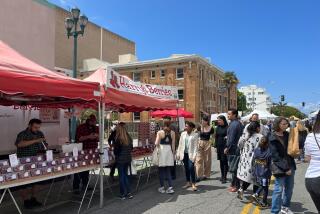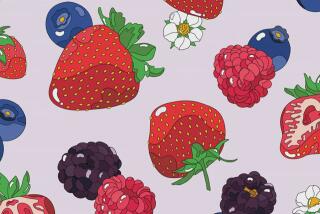Exploring the Family Tree of the Strawberry
- Share via
The season’s first home-grown strawberry is seldom the best because of the temptation to pick it slightly under-ripe. But once strawberries start ripening faster than you can eat them, they are all delectable. Even the yield of a small backyard patch is respectable, with about a quart for every square foot.
Two centuries ago, strawberries were delicacies harvested almost exclusively from the wild. In eastern North America, the small, aromatic Virginia strawberry could be plucked from among grasses of open meadows.
On the Pacific coast, large mild-flavored Chilean strawberries blanketed sand dunes and coastal mountains from Alaska through South America. Throughout the Northern Hemisphere grows yet another species, the alpine strawberry, small but very tasty. And finally we have the musk strawberry from northern Europe, a soft, pale pink with essences of pineapple and raspberry.
Today’s strawberry is a hybrid. One parent is the Virginia strawberry, which had been introduced into a few European gardens in the early 17th century. The other is a Chilean strawberry.
In the early part of the 18th century, a French army captain stationed in Concepcion, Chile, nursed five strawberry plants on the long boat voyage back to France. It was in a garden near Brest, France, that the two species, one from North America, one from South America, happened to be planted together and hybridized by chance. By the early part of the 19th century, breeders were deliberately hybridizing them.
Wild strawberries take care of themselves, providing fruit to those who seek them out. But care is needed to bring out the best in cultivated strawberries. Give these plants a site with well-drained soil enriched with plenty of compost and in full sun. Once a bed is established, remove old plants and thin out young plants to 8 inches apart each spring.
Some historians contend that the name “strawberry” comes from the plants’ habit of strewing themselves all over the place. Other experts claim straw, the traditional mulch, is the source of the name.
At any rate, mulching is an especially good practice for strawberries, keeping the ground cool and moist, suppressing weeds and providing a soft, clean cushion for the ripening gems.
More to Read
Sign up for The Wild
We’ll help you find the best places to hike, bike and run, as well as the perfect silent spots for meditation and yoga.
You may occasionally receive promotional content from the Los Angeles Times.






